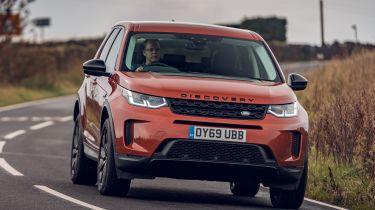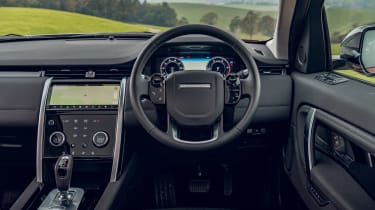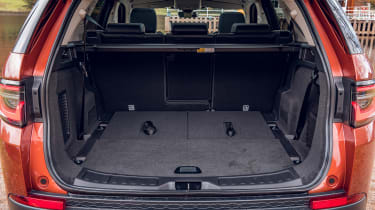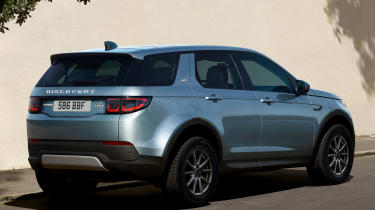Land Rover Discovery Sport: specs and prices
Details on the now more fuel efficient baby Land Rover, including a look at the new Ingenium engine range
The Land Rover Discovery Sport has only been on sale since January 2015 but it’s already had an update to its engine range. Jaguar Land Rover’s Ingenium diesel engines have been introduced into the line-up, so that Land Rover’s most modern of SUVs remains strong when it comes to fuel efficiency.
The Discovery Sport was designed to replace the ageing Land Rover Freelander, and uses tried-and-tested parts from the Range Rover Evoque. That means reliability should be good and a five-star safety rating from Euro NCAP shows that its safety record is top-notch too.
The Discovery Sport is longer but lower and narrower than the Freelander it replaced and features a very similar design to the rest of the cars in the Land Rover and Range Rover line-up. Unlike the Freelander, all UK-spec Discovery Sport models have seven seats as standard and its modern mechanical parts and clever electronics means it’s easier to drive in town, on a country road or up a muddy hill.
We had a look around the new Discovery Sport when it was displayed at the Paris Motor Show. Take a look at our video to see what we thought then:
Land Rover Discovery Sport engines
When it launched in January 2015, the Land Rover Discovery Sport was only available with a 2.2-litre diesel engine from the old Freelander and Range Rover Evoque. Although its 187bhp was decent enough, the dated engine didn’t perform particularly well in terms of fuel economy and CO2 emissions.
The new 2.0-litre Ingenium diesel engine that has replaced it is available in two power options – 148bhp or 178bhp. The less powerful engine of the two is linked to a six-speed manual gearbox and is capable of returning 57.7mpg and carbon dioxide emissions of 129 grams per kilometre. Choose the 178bhp version and you can pick either the manual or Land Rover’s nine-speed automatic. Fuel economy falls by around 4mpg and emissions hit a high of 139g/km, but those are still impressive figures, and much better than the old Freelander’s performance.
The silky-smooth nine-speed automatic gearbox is carried over from other Land Rover and Jaguar models, so you get the modern gear selector that rises from the centre console. It should deliver responsive shifts, even when driving quickly. All models currently have four-wheel-drive, but Land Rover is promising that a more fuel-efficient two-wheel-drive variant will be available later in the year.
While the Discovery Sport’s performance isn’t necessarily dramatic, it's still a fun car to drive. Before it was officially launched, we’d seen pictures of it testing everywhere from British B-roads to the infamous 13-mile Nurburgring racetrack in Germany. As a result, it could be a possibility that a range-topping Land Rover Discovery Sport SVR model could join the range at a later date. We’ve already seen the Special Vehicle Operations unit create a top-of-the-range Range Rover Sport SVR and there are plans for more models in Jaguar and Land Rover’s range to be given the special treatment.
Land Rover Discovery Sport price and release date
The Discovery Sport is available now, with the two-wheel drive entry-level model costing £30,695. This is called the e-Capability and does without the two rearmost seats. There are five trim levels on offer: SE, SE Tech, HSE, HSE Luxury, HSE Black and HSE Dynamic Lux. The priciest model costs £46,000 and that’s before you add any optional equipment.
Land Rover Discovery Sport technology
As you’d expect, the Discovery Sport has loads of clever tech on board. A large eight-inch touchscreen acts as the central display in the dashboard, and it works just like a smartphone; users can swipe to change screens, as well as ‘pinch’ to zoom in and out when you’re looking at maps.
The Discovery Sport can also be connected to Land Rover’s InControl infotainment system, which features Internet radio and sat-nav. There’s also on-board WiFi, as well as a five-inch screen in the instrument cluster that acts as a readout for the 4x4’s settings and trip computer.
Land Rover Discovery Sport safety
The Discovery Sport has been awarded the full five-stars from independent crash-testing organisation Euro NCAP. This is because of some clever safety tech like autonomous emergency braking, which uses a camera to apply the brakes if the driver doesn’t react quickly enough, and the first pedestrian airbag in the SUV class.
There’s also dynamic stability control, traction control, roll stability control, ABS, lane departure warning and seatbelt reminders.
Land Rover Discovery Sport off-road
Drivers who regularly need to go off road needn’t be put off by the Sport’s sleek, Evoque-like design. There’s still an impressive 212mm of ground clearance and short bumpers, so you can climb steep hills without clipping them. Like the current Land Rover Discovery, there's also a range of off-road driving tech on board to help traction, even in the most slippery conditions.
Land Rover Discovery Sport interior
Inside, the lofty driving position gives a great view of the road, while all of the buttons are robust, yet modern. It’s cleverly practical, with up to six USB slots, large storage bins and loads of cupholders. That means the Discovery Sport should hold up well to the trials of family life, just as much as any of its main rivals.
For our full verdict of the Discovery Sport and other Land Rover models, check out Carbuyer’s Land Rover reviews page.
Recommended
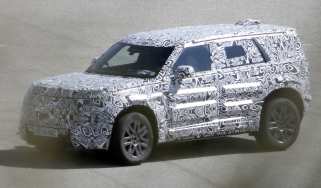
New Land Rover Defender Sport spotted and it’s an electric baby SUV
Most Popular

New Smart #5 Brabus is a 637bhp far cry from the brand’s city car past

Best car leasing deals 2025: this week’s top PCH offers
Tips & advice

Car dashboard warning lights: what does each symbol mean?

Electric car charging stations: public networks, charger types, apps and maps


